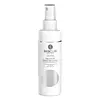BasicLab Micellis Emulsyjny Primer Tonizujący Versus innisfree Youth Enhancing Treatment Essence with Black Tea + Peptides
What's inside
What's inside
 Key Ingredients
Key Ingredients

 Benefits
Benefits

 Concerns
Concerns

No concerns
 Ingredients Side-by-side
Ingredients Side-by-side

Water
Skin ConditioningGlycerin
HumectantHydrolyzed Glycosaminoglycans
HumectantSqualane
EmollientPolyglyceryl-6 Stearate
EmollientSerine
MaskingPentylene Glycol
Skin ConditioningJojoba Oil/Macadamia Seed Oil Esters
Skin ConditioningEctoin
Skin ConditioningCeramide AP
Skin ConditioningCeramide NP
Skin ConditioningMadecassoside
AntioxidantAsiaticoside
AntioxidantPhytosterols
Skin ConditioningPhytosteryl Macadamiate
Skin ConditioningBorago Officinalis Seed Oil
EmollientShea Butter Ethyl Esters
EmollientCentella Asiatica Leaf Extract
Skin ConditioningArginine
MaskingTocopherol
AntioxidantSqualene
EmollientPolyglyceryl-6 Behenate
Emulsion StabilisingCetearyl Alcohol
EmollientXanthan Gum
EmulsifyingHydroxyacetophenone
AntioxidantWater, Glycerin, Hydrolyzed Glycosaminoglycans, Squalane, Polyglyceryl-6 Stearate, Serine, Pentylene Glycol, Jojoba Oil/Macadamia Seed Oil Esters, Ectoin, Ceramide AP, Ceramide NP, Madecassoside, Asiaticoside, Phytosterols, Phytosteryl Macadamiate, Borago Officinalis Seed Oil, Shea Butter Ethyl Esters, Centella Asiatica Leaf Extract, Arginine, Tocopherol, Squalene, Polyglyceryl-6 Behenate, Cetearyl Alcohol, Xanthan Gum, Hydroxyacetophenone
Camellia Sinensis Leaf Water 95%
MaskingWater
Skin ConditioningPropanediol
SolventGlycerin
HumectantNiacinamide
Smoothing1,2-Hexanediol
Skin ConditioningCamellia Sinensis Leaf Extract
AntimicrobialEthylhexylglycerin
Skin ConditioningAdenosine
Skin ConditioningDextrin
AbsorbentEctoin
Skin ConditioningHyaluronic Acid
Humectant3-O-Ethyl Ascorbic Acid
Skin ConditioningGlutathione
Mannitol
HumectantSaccharomyces Cerevisiae Extract
Skin ConditioningButylene Glycol
HumectantCentella Asiatica Flower/Leaf/Stem Extract
Skin ConditioningGlycine Max Polypeptide
Skin ConditioningArginine/Lysine Polypeptide
Skin ConditioningCopper Tripeptide-1
Skin ConditioningDisodium EDTA
Acetyl Tetrapeptide-11
Skin ConditioningCaprylyl Glycol
EmollientAcetyl Heptapeptide-4
HumectantSorbic Acid
PreservativeHexapeptide-9
Skin ConditioningAcetyl Hexapeptide-8
HumectantSodium Hydroxide
BufferingAcetyl Octapeptide-3
HumectantCamellia Sinensis Leaf Water 95%, Water, Propanediol, Glycerin, Niacinamide, 1,2-Hexanediol, Camellia Sinensis Leaf Extract, Ethylhexylglycerin, Adenosine, Dextrin, Ectoin, Hyaluronic Acid, 3-O-Ethyl Ascorbic Acid, Glutathione, Mannitol, Saccharomyces Cerevisiae Extract, Butylene Glycol, Centella Asiatica Flower/Leaf/Stem Extract, Glycine Max Polypeptide, Arginine/Lysine Polypeptide, Copper Tripeptide-1, Disodium EDTA, Acetyl Tetrapeptide-11, Caprylyl Glycol, Acetyl Heptapeptide-4, Sorbic Acid, Hexapeptide-9, Acetyl Hexapeptide-8, Sodium Hydroxide, Acetyl Octapeptide-3
 Reviews
Reviews

Ingredients Explained
These ingredients are found in both products.
Ingredients higher up in an ingredient list are typically present in a larger amount.
Ectoin is a compound found naturally in some species of bacteria. It can be synthetically created for skincare use.
This ingredient is an osmolyte; Osmolytes help organisms survive osmotic shock (it protects them from extreme conditions). It does this by influencing the properties of biological fluids within cells.
When applied to the skin, ectoin helps bind water molecules to protect our skin. The water forms a sort of armor for the parts of our skin cells, enzymes, proteins, and more.
Besides this, ectoin has many uses in skincare:
A study from 2004 found ectoin to counteract the damage from UV-A exposure at different cell levels. It has also been shown to protect skin against both UV-A, UV-B rays, infrared light, and visible light.
Studies show ectoin to have dual-action pollution protection: first, it protects our skin from further pollution damage. Second, it helps repair damage from pollution.
In fact, ectoin has been shown to help with:
Fun fact: In the EU, ectoin is used in inhalation medication as an anti-pollution ingredient.
Ectoin is a highly stable ingredient. It has a wide pH range of 1-9. Light, oxygen, and temperature do not affect this ingredient.
Learn more about EctoinGlycerin is already naturally found in your skin. It helps moisturize and protect your skin.
A study from 2016 found glycerin to be more effective as a humectant than AHAs and hyaluronic acid.
As a humectant, it helps the skin stay hydrated by pulling moisture to your skin. The low molecular weight of glycerin allows it to pull moisture into the deeper layers of your skin.
Hydrated skin improves your skin barrier; Your skin barrier helps protect against irritants and bacteria.
Glycerin has also been found to have antimicrobial and antiviral properties. Due to these properties, glycerin is often used in wound and burn treatments.
In cosmetics, glycerin is usually derived from plants such as soybean or palm. However, it can also be sourced from animals, such as tallow or animal fat.
This ingredient is organic, colorless, odorless, and non-toxic.
Glycerin is the name for this ingredient in American English. British English uses Glycerol/Glycerine.
Learn more about GlycerinWater. It's the most common cosmetic ingredient of all. You'll usually see it at the top of ingredient lists, meaning that it makes up the largest part of the product.
So why is it so popular? Water most often acts as a solvent - this means that it helps dissolve other ingredients into the formulation.
You'll also recognize water as that liquid we all need to stay alive. If you see this, drink a glass of water. Stay hydrated!
Learn more about Water